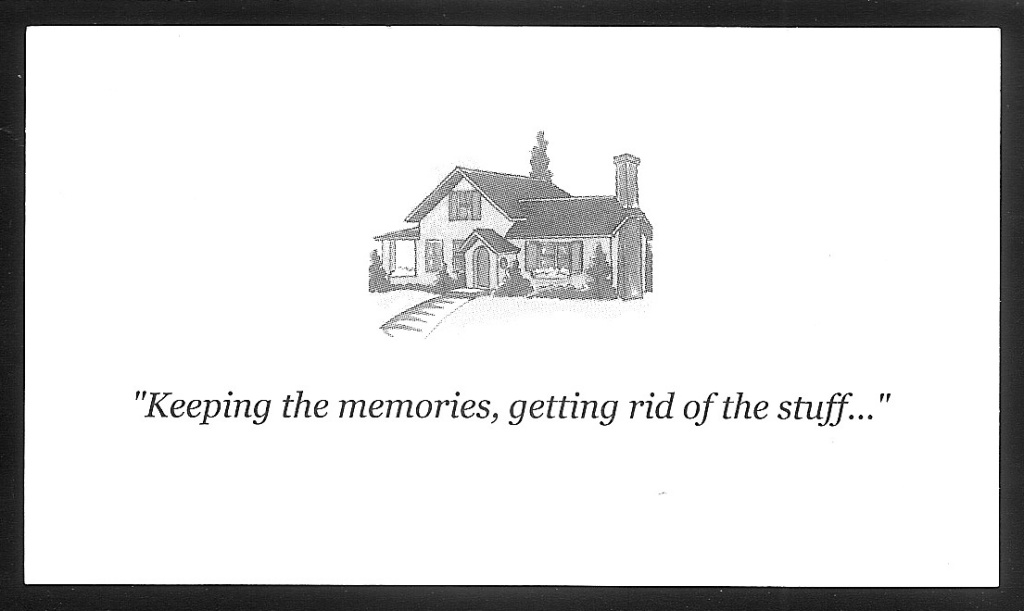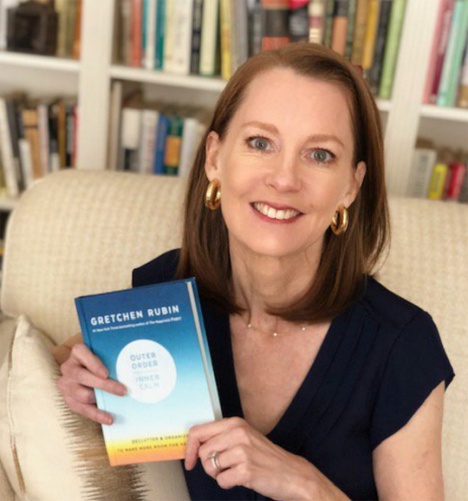
Elizabeth Stewart is a certified member of the Appraisers Association of America with an expertise in appraising art and antiques for estate planning. She knows the best places to sell “stuff” and why certain things are worth keeping. She has a master’s degree in historic preservation from the University of San Diego, and a doctorate from Pacifica Institute in Mythological Studies, with an emphasis on material culture: her dissertation was a scholarly study of consumers, collectors, connoisseurs, and hoarders. She writes a weekly column in the Santa Barbara News Press under the pseudonym “The Gold-Digger,” and hosts a weekly radio show on the arts on KZSB radio. “No Thanks Mom: The Top Ten Objects Your Kids Do NOT Want (and What to Do With Them)” is her second book. She recently took the time to discuss the “generation gap” between baby boomers and millennials in regards to “stuff” with Janet Hulstrand, via email.

Janet: What inspired you to write this book? Was there a particular professional or personal experience that made you realize that there is a kind of generation gap between boomers and millennials when it comes to how they feel about “stuff” and how they want to decorate their homes?
Elizabeth: Was there ever! My son was newly married, and they had just found a house they loved in North Carolina, across the country from me. (I am in Santa Barbara, California.) Thus I had a storage locker dedicated to things I was collecting that I thought a young couple COULD NOT entertain/live/decorate/feather their nest WITHOUT. So for about nine months I sent them about a box a week. When I got the call to come and help them paint their house, I went there. Seeing none of the things I had sent, I thought, “Ok, they’re in storage, because we’re house painting.” Yes, they were stored, all right: in the local Goodwill shop!
Janet: What do you see as the biggest difference between millennials and their baby-boomer parents, especially when it comes to how they feel about possessions?
Elizabeth: The influence of the technology-centered lifestyle. Take memories such as photos and letters, and cards on paper. A mom can have boxes of these. Or in my case, since I am the eldest child of five siblings, steamer trunks of these. The actual physical objects will not be welcomed in the kids’ houses. But a memory stick of them will.
Janet: I get it (and my son has made sure I understand) that millennials DO NOT want their parents’ stuff (which often is actually stuff that has been handed down from grandparents or even great-grandparents). And that this has caused the value of items like crystal, china, silverware, Persian rugs, etc. to plummet. My question for you is, as a professional appraiser, what do you think about the permanency of this trend? Do you think these things are NEVER going to be valuable again? Or will the pendulum swing back again, as most trends do? And if so, what is the best advice for people who are upset by the thought of giving away (or selling at a very low price) things that might gain value again in 20 years or so?
Elizabeth: The concept of nostalgia is a fraction, which is essentially sentimentality over TIME. The TIME part is the shrinking coefficient here, Janet. It used to be that a collectible was 100 years old. Now we see the market for objects from the 1970s and 80s booming. So what is desirable has a shrinking effect, because of two factors. There’s so many children of the boomers—and most of them were born in the 1970s and 80s…We are nostalgic for the things of our youth. And we are living longer. And these youngsters have grown up on the visual IMAGES of things, not necessarily the actual things. (Think of the board games we played with, as opposed to their video games.)
Therefore, yes, the “turnaround” for market prominence of an object will become shorter and shorter as time seems to move faster.
Secondly, there are good reasons that formal china, silver, and glassware might have a resurgence. First, tableware like this is about ritual, and like all rituals they fade and return. Second, because no one wants tableware today, the market 20 years from now will be slim, and the rarity factor will make the values go up.
Janet: What do you think is hardest about letting go of heirlooms that have been in the family for several generations? Do you have any advice or comfort to offer people who realize it’s the right thing to (or maybe the only thing to do!) but still find it painful? Also, are there ways that the millennials can make this process a little less difficult for their parents?
Elizabeth: I read your piece about your father’s dresser, Janet. Well said.
But there’s no way millennials can make it easier on us –because we are witness to two divergent philosophies of material culture between two generations. I call it the intrinsic/extrinsic divide. We believe that objects passed down have intrinsic value because they contain the essence of someone or some past time. Our kids see those objects as extrinsic. They see them for their usability factor… they are what they APPEAR, and contain nothing more than the materials which they are made of, and the use for which they are made. And much of our stuff and our grandparents’ stuff is not designed to be used in the modern house of today.
In other words, the image of the object trumps what essence the object contains.
That’s because our kids from birth have been flooded with superficial visual images (think of all the screens around them and all the visual content contained thereupon.) So they are expert curators of the visual, not of the material itself. These two philosophies will never coexist.
Janet: Your book has a ton of really helpful practical tips, and to get them, of course, people have to buy your book! But what is one of your favorite tips, or perhaps one of the ones people have told you is the most helpful?
Elizabeth: Most helpful has been my suggestion to speak in millennial language: that is, to use visual technology to make a case for the millennials to keep something in the family. For example, go around your home, have someone film you, stand in front of each item, narrate the object’s story, and then send CD’s of this to all family members.
Janet: What was the most interesting or surprising thing you learned in the process of writing this book?
Elizabeth: How upset my daughter in law was that I was going public with this! She wrote a rebuttal to my book, which I published on my website, and she spent hours reacting to my book. Mostly she was upset about the inherent paternalism in our culture, which forces the MOM to do the hard work of defending her objects. And she was concerned that I didn’t focus on that, as well as concerned that her generation had a good reason for wanting to start over fresh—-thus to be allowed to say NO.
Janet: I think it was generous of you, and can be quite helpful to others, that you posted your daughter-in-law’s rebuttal to your book on your website. I also think her rebuttal is quite eloquent, and that she articulated her position both clearly and sensitively. I’d like to ask how you weathered the rocky period between when you realized all your special gifts for your son and daughter-in-law were being rejected, and now. How difficult was that period, and does this story have a happy ending?
Elizabeth: My daughter in-law is in her last year at Duke Law School, and is an eloquent debater and writer. Her rebuttal is indeed illuminating as it brings an additional layer to the problem of downsizing, which is so deep in our culture that we don’t even think about it: but really, who made MOM the curator of stuff?!
And who made daughters-in-law the RECEIVERS of stuff?
There’s a feminist angle here which I didn’t see until she pointed it out. Why, furthermore, should it be the female role to feather the nest or defeather the nest, to entertain, to even think that way?
My writing the book and Meredith’s rebuttal was slightly painful to both myself and her, but we learned that the generations indeed do look at stuff differently, and along with changing trends in decorating and entertaining, there’s a gender bias there as well. So now we are in even deeper!
Janet: What are the main lessons learned from what you went through in this regard in your own family?
Elizabeth: When I downsized my 87-year-old mom’s house last month, I saved for her the valuable and irreplaceable objects. I ditched the toaster, the old computer, the old pots, the tv trays, the potty seat raiser, the old towels.
What did she want when we moved her into the new house? The toaster, the old towels, the potty seat raiser. I had neglected to remember that even the act of shopping is exhausting at her age. So, again, I should have listened to specific issues germane to the age and generation of the woman involved.
Janet Hulstrand is a writer/editor, writing coach, travel blogger, and coauthor of Moving On: A Practical Guide to Downsizing the Family Home. Elizabeth Stewart is a certified member of the Appraisers Association of America, and the author of “No Thanks Mom! The Top Ten Objects Your Kids Do NOT Want.”
Filed under: downsizing the home | Tagged: boomers downsizing, downsizing the home, millennials don't want boomer stuff, millennials v. boomers and their stuff, millennnials & boomers | Leave a comment »














 I’m involved in another round of downsizing this month, and as I become aware of some of the things I could have done better along the way, it occurred to me it might be helpful to share with our readers some of the downsizing mistakes I’ve made.
I’m involved in another round of downsizing this month, and as I become aware of some of the things I could have done better along the way, it occurred to me it might be helpful to share with our readers some of the downsizing mistakes I’ve made.



